Latest posts by (see all)
- The Best Things to Do in Tulsa - June 26, 2020
- The Most Interesting Things to Do in Springfield Mo - June 15, 2020
- Best Things to Do in Salt Lake City - May 26, 2020
- 10 Best Websites for Playing Online Games - May 22, 2020
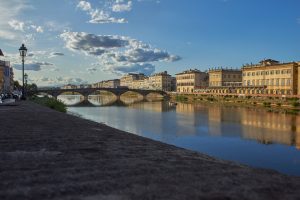 Florence is the city of the arts, the cradle of the Renaissance. The city is very conveniently located almost in the center of the road between the north of Italy and its capital. In Florence, it is easy to get from any major city, either it’s Venice, Milan or Rome. Therefore, many travelers in Italy are trying to include Florence in their itinerary, preferring to spend at least one day here. Despite the fact that the city is very compact and all the central sights are located within walking distance from each other, one day won’t be enough to go sightseeing. The artistic collection of this city is considered one of the best in Europe. But even a quick acquaintance with one of the museums will steal at least 2 hours of precious time. If you want to plan your trip beforehand, then check out the most interesting things to do in Florence, Italy.
Florence is the city of the arts, the cradle of the Renaissance. The city is very conveniently located almost in the center of the road between the north of Italy and its capital. In Florence, it is easy to get from any major city, either it’s Venice, Milan or Rome. Therefore, many travelers in Italy are trying to include Florence in their itinerary, preferring to spend at least one day here. Despite the fact that the city is very compact and all the central sights are located within walking distance from each other, one day won’t be enough to go sightseeing. The artistic collection of this city is considered one of the best in Europe. But even a quick acquaintance with one of the museums will steal at least 2 hours of precious time. If you want to plan your trip beforehand, then check out the most interesting things to do in Florence, Italy.
Contents
- Thing to do number 1: Visit the 4th Largest Cathedral in the World
- Thing to do number 2: Have a look at the Uffizi Gallery
- Thing to do number 3: Visit the Beatiful Palace Palazzo Pitti
- Thing to do number 4: Visit the Palazzo Medici Riccardi
- Thing to do number 5: Have a Walk at the square of Santissima Annunziata
- Thing to do number 6: Visit San Marco Museum
- Thing to do number 7: Go to the Academy of Fine Arts
- Thing to do number 8: Have a Look at the New Sacristia
- Thing to do number 9: Have a Walk in the Boboli Gardens
- Thing to do number 10: Look at the Masterpieces in the Palatine Gallery
- Video
Thing to do number 1: Visit the 4th Largest Cathedral in the World
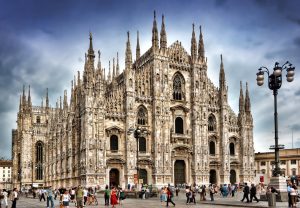 Florence Cathedral, or the Duomo Santa Maria del Fiori, which grand dome is one of the recognizable silhouettes of the city, is located on the Piazza del Duomo. The construction of this most famous cathedral of Florence began in 1294 and lasted 81 years. The best architects of that time took part in the erection of the cathedral:
Florence Cathedral, or the Duomo Santa Maria del Fiori, which grand dome is one of the recognizable silhouettes of the city, is located on the Piazza del Duomo. The construction of this most famous cathedral of Florence began in 1294 and lasted 81 years. The best architects of that time took part in the erection of the cathedral:
- Giotto
- Arnolfo di Cambio
- Andrea Pisano
However, the octagonal dome of the work of Filippo Brunelleschi from 1420-1436 brought world-wide fame to the cathedral. The top of the dome at an altitude of 91 meters is crowned with a spire with a ball, which was raised there by means of a machine created by Michelangelo. The decoration of the facade of the temple in white, pink and green was completed only in 1887, when Florence was the capital of Italy.
Connoisseurs and art lovers will be interested to see the new and old Duomo sacristies, a terracotta lunette in the blue and white tones of the work of Luca della Robbia, a bronze reliquary by Lorenzo Ghiberti, in which the relics of the first bishop of Florence, the canonized Zenobia, are stored. Dimensions of the Duomo impress the imagination: 153 meters in length and 90 meters in width.
Interesting: Today Santa Maria del Fiori is the fourth largest cathedral in the world, behind only St. Peter’s in the Vatican, St. Paul’s Cathedral in London and the Milan Duomo.
Back
Thing to do number 2: Have a look at the Uffizi Gallery
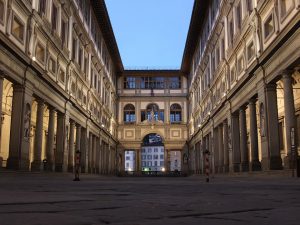 Undoubtedly, the Uffizi Gallery is Florence’s most famous landmark. The Gallery building, erected by Vasari to accommodate various kinds of government services of the Tuscan duchy, is now a well-known museum in which the most complete collections of works of art are kept. The Uffizi Gallery combined several architectural objects that existed before:
Undoubtedly, the Uffizi Gallery is Florence’s most famous landmark. The Gallery building, erected by Vasari to accommodate various kinds of government services of the Tuscan duchy, is now a well-known museum in which the most complete collections of works of art are kept. The Uffizi Gallery combined several architectural objects that existed before:
- the church of San Piero-Skieragio, in which walls Dante and Boccaccio once spoke
- Mint, in which gold florins were minted since the 13th century.
- Among the treasures stored in the Uffizi Gallery, there are masterpieces created by Giotto, Caravaggio, Titian, Leonardo da Vinci, Rubens, Perugio.
Only in this Florentine museum, you can see the famous tune of the work of Michelangelo, depicting the Holy Family, as well as the works of Raphael, “Adoration of the Magi” Gentile da Fabiano, “Birth of Venus” and “Spring” by Botticelli.
Interesting: The best works of the greatest masters of the Renaissance are presented in the Uffizi Gallery today.
Thing to do number 3: Visit the Beatiful Palace Palazzo Pitti
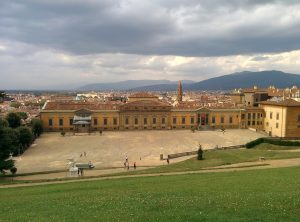 One of the most magnificent palaces in Florence – Palazzo Pitti. In the XV century it was built by the architect Brunelleschi for the Florentine merchant Luca Pitti. For its long history Palazzo Pitti changed the hosts several times and was rebuilt. Today this interesting architectural complex is famous for its adjacent Boboli Gardens – the most beautiful example of landscape art of the Renaissance.
One of the most magnificent palaces in Florence – Palazzo Pitti. In the XV century it was built by the architect Brunelleschi for the Florentine merchant Luca Pitti. For its long history Palazzo Pitti changed the hosts several times and was rebuilt. Today this interesting architectural complex is famous for its adjacent Boboli Gardens – the most beautiful example of landscape art of the Renaissance.
On the territory of the palace, there are several famous museums:
- the Palatine Gallery, where you can see the canvases of Titian, Raphael, Tintoretto, Caravaggio, Botticelli, Filippo Lippi, Velasquez, Van Dyck and Rubens;
- The Gallery of Contemporary Art, storing a remarkable collection of works of Italian artists of the XIX-XX centuries.
Interesting: In the Palazzo Pitti, there is the Silver Museum (jewelry, crystal, Chinese porcelain), the Costume Museum (clothes of various eras) and the Carret Museum (carriages and carriages of the XIX-XX centuries).
Thing to do number 4: Visit the Palazzo Medici Riccardi
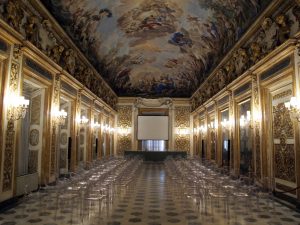 The Palazzo Medici Riccardi is the palace of the Medici family, built by the architect Michelozzo di Bartolomeo, commissioned by Cosimo the Elder in 1444. This famous landmark of Florence is located one block from the Duomo Square. The Medici palace of Riccardi is the first example of the secular buildings of Florence of the early Renaissance. Correct tetrahedral form of the building contains in the depths of its walls the same regular form the inner courtyard, surrounded by arcades, in which are planted lemon trees. Following the example of the Palazzo Medici, Riccardi later many other structures were built, and its form eventually became familiar among the palaces of the Renaissance in Italy.
The Palazzo Medici Riccardi is the palace of the Medici family, built by the architect Michelozzo di Bartolomeo, commissioned by Cosimo the Elder in 1444. This famous landmark of Florence is located one block from the Duomo Square. The Medici palace of Riccardi is the first example of the secular buildings of Florence of the early Renaissance. Correct tetrahedral form of the building contains in the depths of its walls the same regular form the inner courtyard, surrounded by arcades, in which are planted lemon trees. Following the example of the Palazzo Medici, Riccardi later many other structures were built, and its form eventually became familiar among the palaces of the Renaissance in Italy.
- According to the client’s plan, the ground floor of the palazzo, lined with a rough rust, was supposed to symbolize the firmness of the Medici government.
- In the premises of the first floor were stables, servants’ rooms, kitchen.
- On the second and third floors, the facades of which were covered with smoother slabs, the owners’ apartments were located.
- In 1517, one of the loggias of the palace was walled up, and in it appeared windows with niches of lancet form – timbrels, made by Michelangelo.
The most famous building of the Medici Riccardi Palace is the Chapel of the Magi, was also created by the architect Michelozzo. The main decoration of the chapel is the fresco of Benozzo Gozzoli “The Procession of the Magi in Bethlehem”. On it in the image of the Magi, the owners of the castle are depicted, as well as easily recognizable and famous historical figures who gathered in the city on the Florence Cathedral of 1439.
Interesting: Today the palace is partially open to visitors. In its premises, there is the prefecture of the city.
Thing to do number 5: Have a Walk at the square of Santissima Annunziata
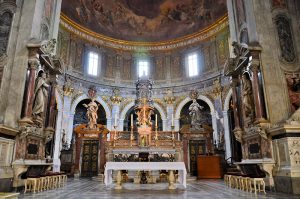 The square Santissima Annunziata is dedicated to the Annunciation of the Virgin Mary. It is one of the most beautiful squares of Florence. The uniqueness of the architectural style of the square is attached to three buildings with open arched galleries:
The square Santissima Annunziata is dedicated to the Annunciation of the Virgin Mary. It is one of the most beautiful squares of Florence. The uniqueness of the architectural style of the square is attached to three buildings with open arched galleries:
- the Church of the Annunciation of the Virgin Mary (Church of Santissima Annunziata)
- the portico of the Servite Order
- and the Educational home for the foundlings, built according to the Brunelleschi project
No doubt, the center of the square is considered to be the Church of Santissima Annunziata (Santissima Annunziata), built in 1250 by the Order of Servants (Servant of Mary). Reached to our times, this basilica acquired in 1444 – 1477, undergoing a reconstruction under the direction of Michelozzo and Leon Battista Alberti. The features of the Baroque style appeared in the church to the XVIII century, which gave the basilica an unexpectedly festive look.
The facade of the Brunelleschi Orphanage, located next to the church, is decorated with a portico with nine arches resting on stone pillars and medallions of majolica by Andrea della Robbia. Inside the shelter there is a beautiful courtyard. The second floor houses a collection of frescoes and the Shelter Gallery. Opposite the Shelter is the Portico of the Order of Servites, built by Sangallo the Elder and Baccio d’Agnolo in 1516-1525, repeating the forms of the arched gallery of Brunelleschi.
In the middle of the square stands the equestrian statue of Ferdinand I of the Medici, a pair of which is the equestrian statue of Cosimo I in Piazza della Signoria – its author was also Jambolonia. However, the sculptor Takka graduated in 1608.
Interesting: Tacca’s mastery of the Florentines is also due to the appearance of two fountains, located strictly symmetrically on both sides of the square. Fountains were created in 1629, and depict allegorical sea monsters.
Thing to do number 6: Visit San Marco Museum
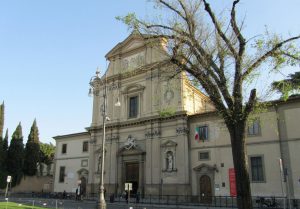 San Marco is a museum of Florence, which today is housed in the building of an ancient Dominican monastery, founded in the XII century. In the 15th century, the monastery was rebuilt by the order of Pope Eugene IV and with the funding of Cosimo de ‘Medici the Elder. The project was designed by Michelozzo , and upon completion of the reconstruction Cosimo donated to the monastery also part of the collection of books by Niccolo Niccoli, which later became the foundation of the library of Laurentian.
San Marco is a museum of Florence, which today is housed in the building of an ancient Dominican monastery, founded in the XII century. In the 15th century, the monastery was rebuilt by the order of Pope Eugene IV and with the funding of Cosimo de ‘Medici the Elder. The project was designed by Michelozzo , and upon completion of the reconstruction Cosimo donated to the monastery also part of the collection of books by Niccolo Niccoli, which later became the foundation of the library of Laurentian.
- The monastery of San Marco is also famous for the fact that in the XV century there lived the notoriously self-willed monk Savonarola.
- On the second floor of the building, there is a cell with his portrait of Fra Bartolomeo.
- In San Marco, Beato Angelico lived and worked (Fra Giovanni from Fiesole), so it is not surprising that all the premises of the monastery are decorated with his frescoes. The most famous of them are The Annunciation and The Last Judgment.
Interesting: The cells of the second floor are also painted by Fra Angelico and his disciples, and in the refectory you can see the magnificent “Last Supper” of Ghirlandaio.
Thing to do number 7: Go to the Academy of Fine Arts
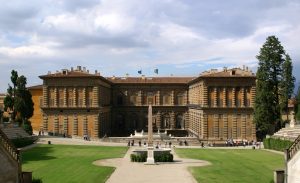 The Academy of Fine Arts in Florence – the first Academy of Painting, the popular museum of Florence. It was opened in 1561 on the initiative of Cosimo I of the Medici. The founders of it were three famous artists – Giorgio Vasari, Agnolo Bronzino and Bartolomeo Ammanati. Since 1784, all the art schools in Florence have been subordinate to the Academy. To the fine arts also carried music and the restoration of works of art. At the academy opened an art gallery.
The Academy of Fine Arts in Florence – the first Academy of Painting, the popular museum of Florence. It was opened in 1561 on the initiative of Cosimo I of the Medici. The founders of it were three famous artists – Giorgio Vasari, Agnolo Bronzino and Bartolomeo Ammanati. Since 1784, all the art schools in Florence have been subordinate to the Academy. To the fine arts also carried music and the restoration of works of art. At the academy opened an art gallery.
Today, the collection of art of the Academy’s gallery is one of the most valuable in Italy. Here, there is the richest collection of sculptures by Michelangelo:
- the original of David,
- Pieta Palestrina,
- the unfinished statue of St. Matthew,
- the Evangelist Luke
- and the Four Slaves, intended for St. Peter’s Cathedral in Rome.
Here, you can admire the “Rape of the Sabines” Jambolonya, as well as see the best examples of Florentine painting of the XV-XVI centuries.
Interesting: Works by Taddeo Gaddi, Filippino Lippi, Andrea Orcagna, Fra Bartolomeo, Bronzino, Ghirlandaio – this is just a small list of the values collected in the Academy’s gallery in Florence.
Thing to do number 8: Have a Look at the New Sacristia
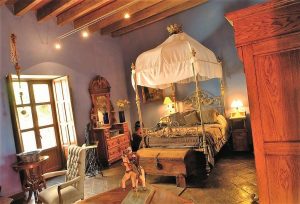 The new Sacristia is a famous building of the Basilica of San Lorenzo, which can be reached by walking along the corridor from the Medici Chapel. The design of this room was worked by Michelangelo himself. He created a project, which in 1520 was built a chapel. In addition, he was the author of the tombstones of two more representatives of the Medici family, who are in Sacristia:
The new Sacristia is a famous building of the Basilica of San Lorenzo, which can be reached by walking along the corridor from the Medici Chapel. The design of this room was worked by Michelangelo himself. He created a project, which in 1520 was built a chapel. In addition, he was the author of the tombstones of two more representatives of the Medici family, who are in Sacristia:
- Giuliano Medici,
- Duke of Nemours,
- and Lorenzo de ‘Medici, Duke of Urbino.
The tombstone of Giuliano is adorned by the famous allegorical sculpture group “Day” and “Night” by Michelangelo, and the tombstone of Lorenzo is also the famous figure “Evening” and “Morning”.
Interesting: Here, in the chapel Lorenzo the Magnificent de Medici was buried, as well as his lost brother Giuliano, whose tomb is adorned with a sculpture of the Madonna and Child.
Thing to do number 9: Have a Walk in the Boboli Gardens
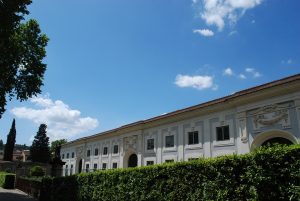 Boboli Gardens is the most famous park in Florence, adjoining directly to the Palazzo Pitti. Gardens are a vivid example of landscape art of the Renaissance. The park ensemble was designed by Niccolo Pericoli (Tribolo) in the 16th century by the order of Eleonora of Toledo, the wife of Duke Cosimo I de Medici. The design of the Boboli Gardens was worked out by Ammanati, Vasari and Buontalenti once worked. Later, Boboli Gardens served as a model, according to which all the European royal parks, including Versailles, were designed.
Boboli Gardens is the most famous park in Florence, adjoining directly to the Palazzo Pitti. Gardens are a vivid example of landscape art of the Renaissance. The park ensemble was designed by Niccolo Pericoli (Tribolo) in the 16th century by the order of Eleonora of Toledo, the wife of Duke Cosimo I de Medici. The design of the Boboli Gardens was worked out by Ammanati, Vasari and Buontalenti once worked. Later, Boboli Gardens served as a model, according to which all the European royal parks, including Versailles, were designed.
In the garden, there are many:
- grottoes,
- fountains,
- statues,
- open pavilions
- and pavilions with colonnades.
The peculiarity of the Boboli park is considered to be the spectacular panorama of Florence opening from its grounds. The gardens were opened to the public in 1766.
Interesting: Today the park occupies 4.5 hectares of area, and it also performs the functions of the Museum of Garden Sculpture, which presents samples of sculptural art, from ancient times to the 17th century.
Thing to do number 10: Look at the Masterpieces in the Palatine Gallery
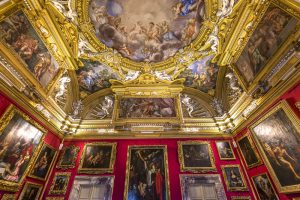 This museum of Florence, which now includes more than 500 paintings, occupies about 20 rooms on the upper floor of Palazzo Pitti Palace. The collection of paintings, the Medici began to collect, then the Lorraine dukes substantially supplemented it. Unlike the Uffizi collection, which became a national treasure in 1737, the Palatine Gallery remained private property of the rulers of Florence for a long time. Only in 1828 Leopold II opened a collection of paintings by Palazzo Pitti to the general public, and the gallery was transferred to the ownership of the state only in 1911.
This museum of Florence, which now includes more than 500 paintings, occupies about 20 rooms on the upper floor of Palazzo Pitti Palace. The collection of paintings, the Medici began to collect, then the Lorraine dukes substantially supplemented it. Unlike the Uffizi collection, which became a national treasure in 1737, the Palatine Gallery remained private property of the rulers of Florence for a long time. Only in 1828 Leopold II opened a collection of paintings by Palazzo Pitti to the general public, and the gallery was transferred to the ownership of the state only in 1911.
Since the Palace of Pitti is preserved as a single cultural and historical ensemble, all works of painting in it are in the same places that they occupied with their owners. In addition, the grouping of works of art in schools or epochs is absent: the gallery uses the principle of “palace placement” of paintings, where the decisive factor is the size, plot, colors of canvases. In the collection of the Palatine Gallery, painting of the 16th – 17th centuries is most widely covered, Italian painters of the 15th century and Flemish paintings of the 17th century are less represented, which, however, corresponds to the ceremonial decor of the palace premises.
Among the early Italian artists, there are:
- paintings of Cimabue (1272-1302) and Fra Filippo Lippi (1406-1469),
- Sandro Botticelli (1444 / 5-1510) and Pietro Perugino (circa 1450-1523).
Interesting: From medieval Italian artists, you will find in the gallery a large collection of Raphael (1483-1520) – 11 canvases, Titian (1477-1576) – 13 canvases. The collection is decorated with paintings by Tintoretto (1518-1594) and Veronese (1528-1588).
Back